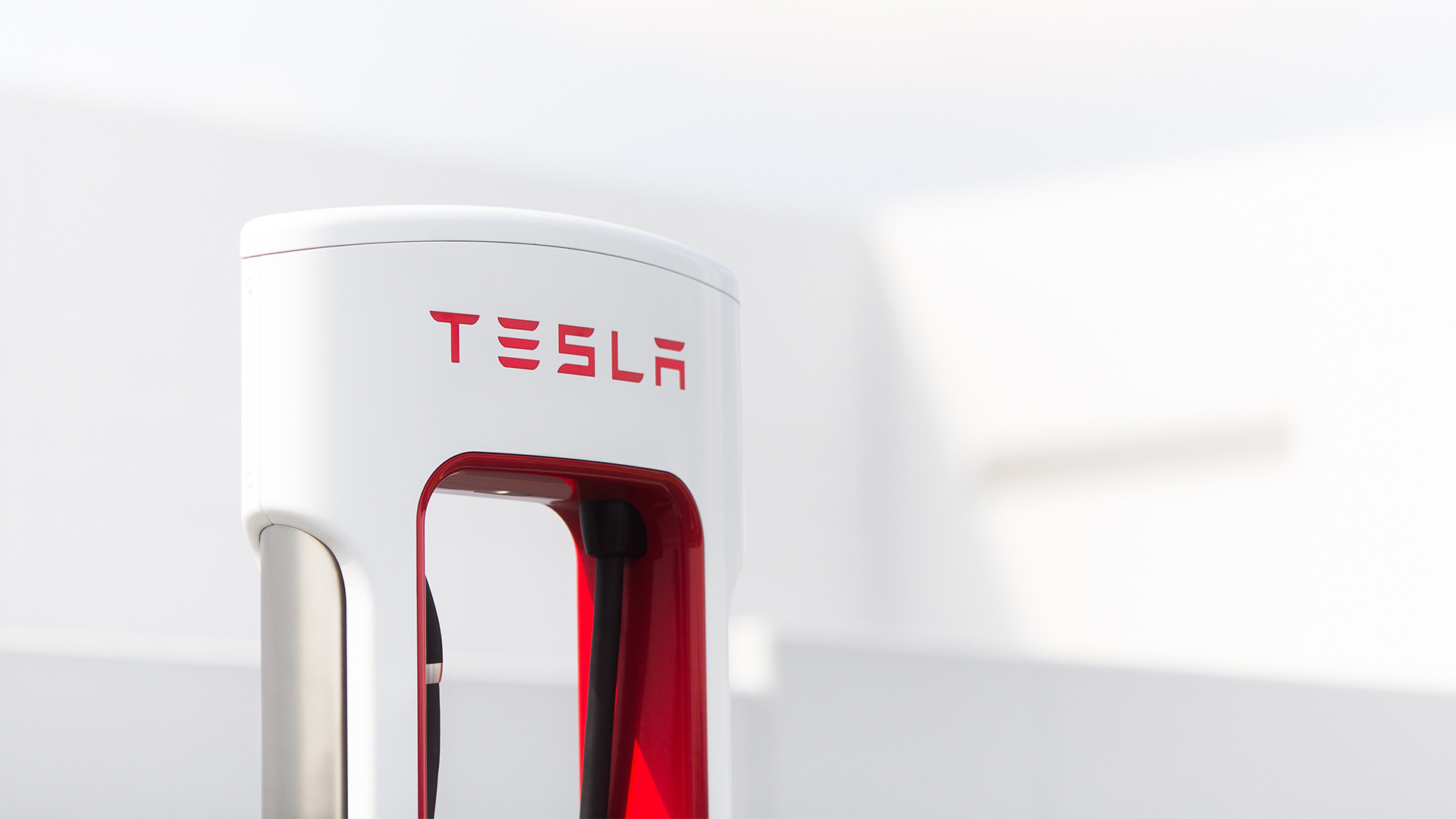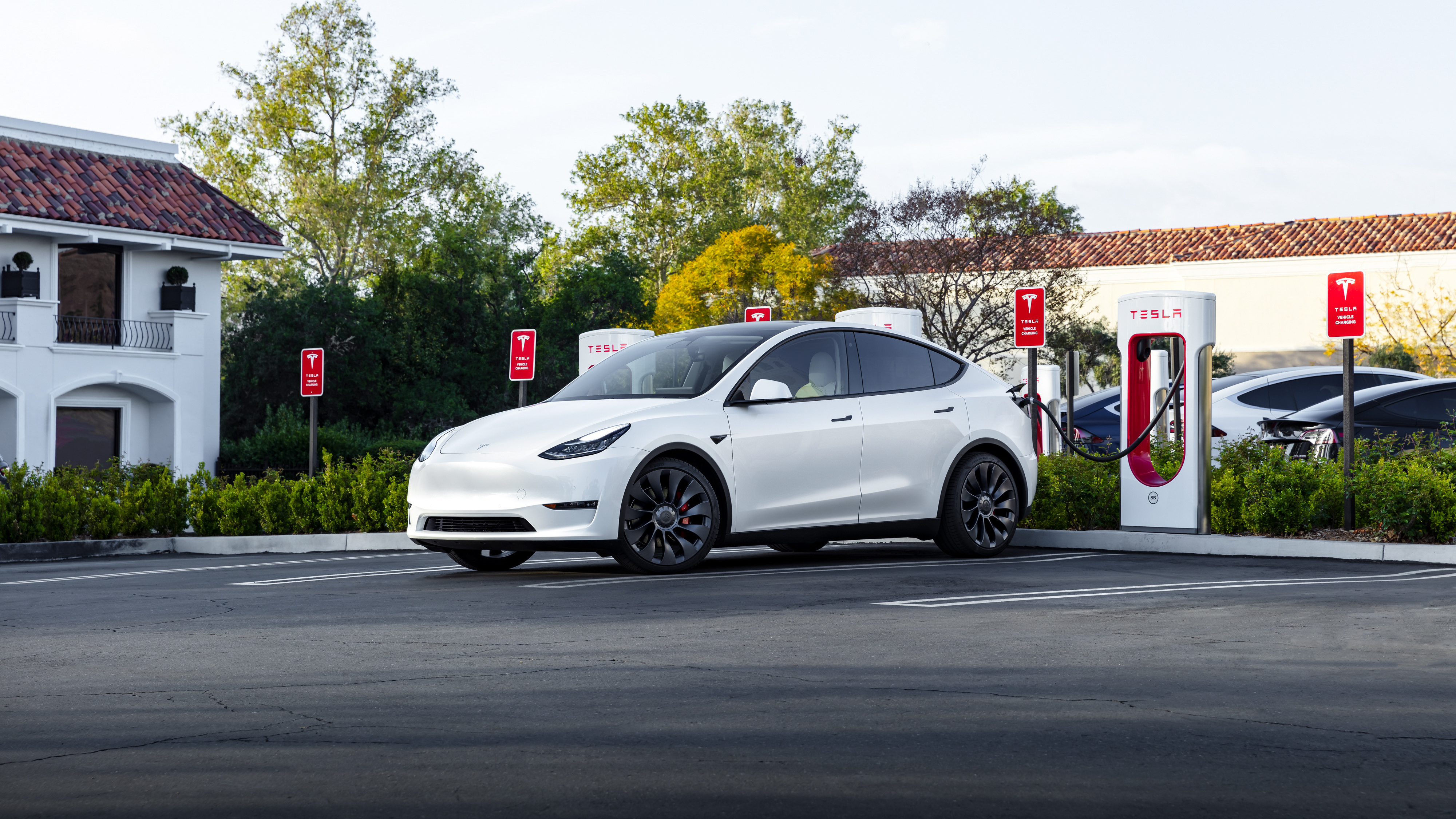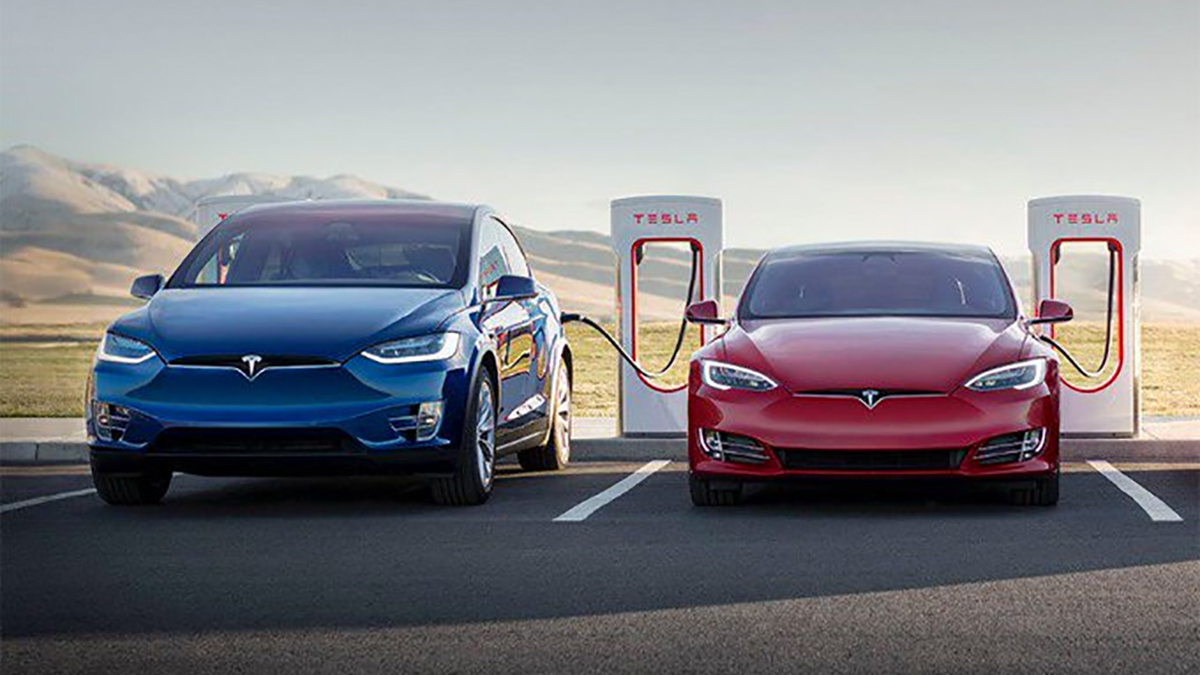Tesla's Supercharger congestion fee lands just in time for the holidays
Busy stations could limit owner's state of charge to 80 per cent

Tesla has announced that it will enforce a new Supercharger fee at particularly busy EV charging stations, in an attempt to reduce congestion at some of its most in-demand locations. Just in time for the great Thanksgiving getaway.
The move goes one step beyond Tesla’s current Idle Fees, which were designed to keep Supercharger stations running smoothly by financially penalizing Tesla owners who left their vehicles tethered to a charging station, even when fully charged.
This fee was $0.50 (£0.50) per minute, rising to $1 or £1 if the Tesla Supercharging station in question was fully-occupied.
With the recent explosion in popularity of EVs, charging points are getting busier, so Tesla has replaced the Idle Fee with a new congestion charge that will see owners incurring a financial penalty for every minute they continue to recharge the vehicle’s battery pack beyond a 90 per cent State of Charge (SOC).
Currently, this only applies to Tesla Supercharging stations in the US, and will be limited to those that are particularly busy, although the automaker didn’t release details on how it determines if a station is busy or not.
Tesla’s support pages simply say: "At certain Supercharging locations, congestion fees will replace idle fees. A congestion fee is a fee you pay when a Supercharger is busy, and your vehicle’s battery is above a certain level."

A necessary evil

Although this could be construed as a tax on those wanting to fully charge their batteries, the reality is, in most cases, it doesn’t make much sense to charge beyond around 80 per cent anyway.
Get daily insight, inspiration and deals in your inbox
Sign up for breaking news, reviews, opinion, top tech deals, and more.
The fastest charging sessions are typically between 20 and 80 per cent of a battery’s capacity, purely because battery management software protects the longevity of the cells by slowing things down at the very beginning, in order to prepare the cells for charge, and at the end, where it drastically reduces the rate of charge to prevent damage from overheating.
In fact, it can often take as long – if not longer – to fill the final 20 per cent of en EV’s battery as it does to go from 20 to 80 per cent, which understandably causes congestion headaches at fast charging facilities such as Tesla’s Supercharger network.
Tesla says the fee "encourages drivers to charge only as much as is needed for their trip, rather than all the way to 100 per cent. This increases the availability of Superchargers so that everyone has access when they need it".
The move also comes following Tesla’s decision to open up its charging network to electric vehicles from other brands. Seeing as most manufacturers are now converting their cars to Tesla's North American Charging Standards connectors, things are only going to get busier.
You might also like

Leon has been navigating a world where automotive and tech collide for almost 20 years, reporting on everything from in-car entertainment to robotised manufacturing plants. Currently, EVs are the focus of his attentions, but give it a few years and it will be electric vertical take-off and landing craft. Outside of work hours, he can be found tinkering with distinctly analogue motorcycles, because electric motors are no replacement for an old Honda inline four.